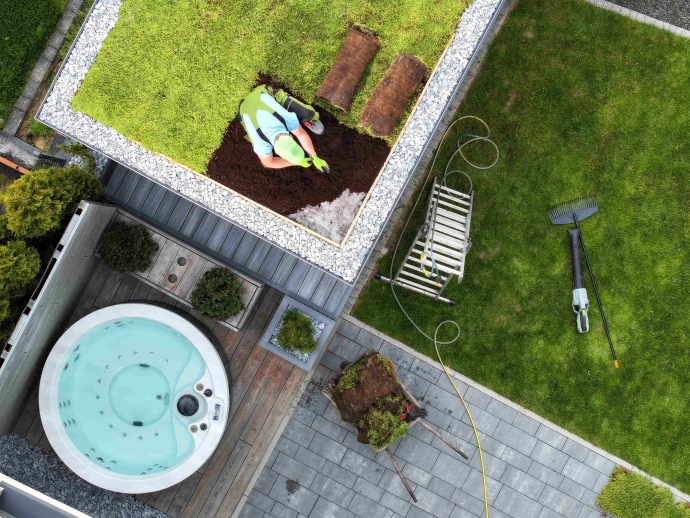Why Green Building Is Essential

As the global community grapples with the challenges of climate change, resource depletion, and urbanization, the concept of green building has emerged as a crucial strategy for sustainable development. Green buildings are designed to minimize environmental impact while maximizing energy efficiency, resource conservation, and occupant health. This article explores the essential reasons why green building practices are imperative for a sustainable future.
Environmental Benefits
1. Reducing Carbon Footprint
Buildings are responsible for nearly 40% of global energy-related carbon emissions. By adopting green building practices, we can significantly reduce this footprint. Green buildings utilize energy-efficient designs and renewable energy sources, such as solar panels and wind turbines, to lower reliance on fossil fuels. For instance, LEED-certified buildings have been shown to reduce CO2 emissions by an average of 34%, highlighting the potential impact of sustainable construction on climate change mitigation.
2. Water Conservation
Water scarcity is an escalating concern worldwide. Green buildings employ water-efficient fixtures and systems that can reduce water consumption by up to 40%. Techniques such as rainwater harvesting and greywater recycling not only conserve this precious resource but also alleviate pressure on municipal water systems. By minimizing water waste, green buildings contribute to the preservation of local ecosystems and biodiversity.
3. Waste Reduction
Traditional construction practices generate significant amounts of waste. In contrast, green building emphasizes resource management and recycling. During construction, materials are selected based on their recyclability, and any waste generated is often repurposed or recycled. This approach has led to LEED projects diverting over 80 million tons of waste from landfills. By reducing waste generation throughout a building's lifecycle, we can lessen the strain on landfills and promote a circular economy.
Economic Advantages
4. Lower Operating Costs
One of the most compelling reasons to invest in green building is the potential for lower operating costs. Energy-efficient designs lead to reduced utility bills, with studies showing that green buildings can save up to 30% on energy costs compared to conventional structures. Additionally, the long-term durability of eco-friendly materials reduces maintenance expenses over time, making green buildings a financially sound investment.
5. Increased Property Value
Properties built with sustainable practices often command higher market values. As more buyers prioritize eco-friendly features, homes and commercial spaces that incorporate green building standards become increasingly desirable. This trend not only benefits property owners but also contributes to the overall growth of sustainable real estate markets.
Health and Well-Being
6. Improved Indoor Air Quality
Green buildings are designed with occupant health in mind. They utilize non-toxic materials that minimize exposure to harmful chemicals commonly found in traditional construction materials. Enhanced ventilation systems facilitate the inflow of fresh air while expelling stale air, leading to improved indoor air quality. Research has shown that occupants of green buildings experience fewer respiratory issues and overall better health outcomes.
7. Enhanced Comfort and Productivity
The design elements of green buildings—such as natural lighting, thermal comfort, and acoustic control—contribute to a more pleasant living or working environment. Studies indicate that employees in green office spaces report higher levels of satisfaction and productivity due to improved comfort conditions. This boost in workplace morale can translate into economic benefits for businesses through enhanced employee performance.
Social Responsibility
8. Community Resilience
Green building practices foster community resilience by promoting sustainable urban development. By integrating green spaces and sustainable infrastructure into urban planning, cities can enhance their ability to withstand environmental challenges such as flooding and heatwaves. Furthermore, green buildings can serve as community hubs that encourage social interaction and promote a sense of belonging among residents.
9. Job Creation
The transition to a greener economy generates new job opportunities in various sectors, including construction, renewable energy, and environmental management. According to the EPA, clean energy initiatives enhance local economies by creating demand for skilled labor in specialized fields. Investing in green building not only supports environmental goals but also contributes to economic growth through job creation.
Conclusion
Green building is essential for addressing some of the most pressing challenges facing our planet today—from climate change and resource depletion to public health concerns. By prioritizing sustainability in construction practices, we can create healthier environments for ourselves while safeguarding natural resources for future generations.
The benefits of green building extend beyond individual properties; they contribute to stronger communities, improved public health outcomes, and a more resilient economy. As we move forward into an uncertain future, embracing green building practices will be vital for fostering a sustainable world that prioritizes both people and the planet.

